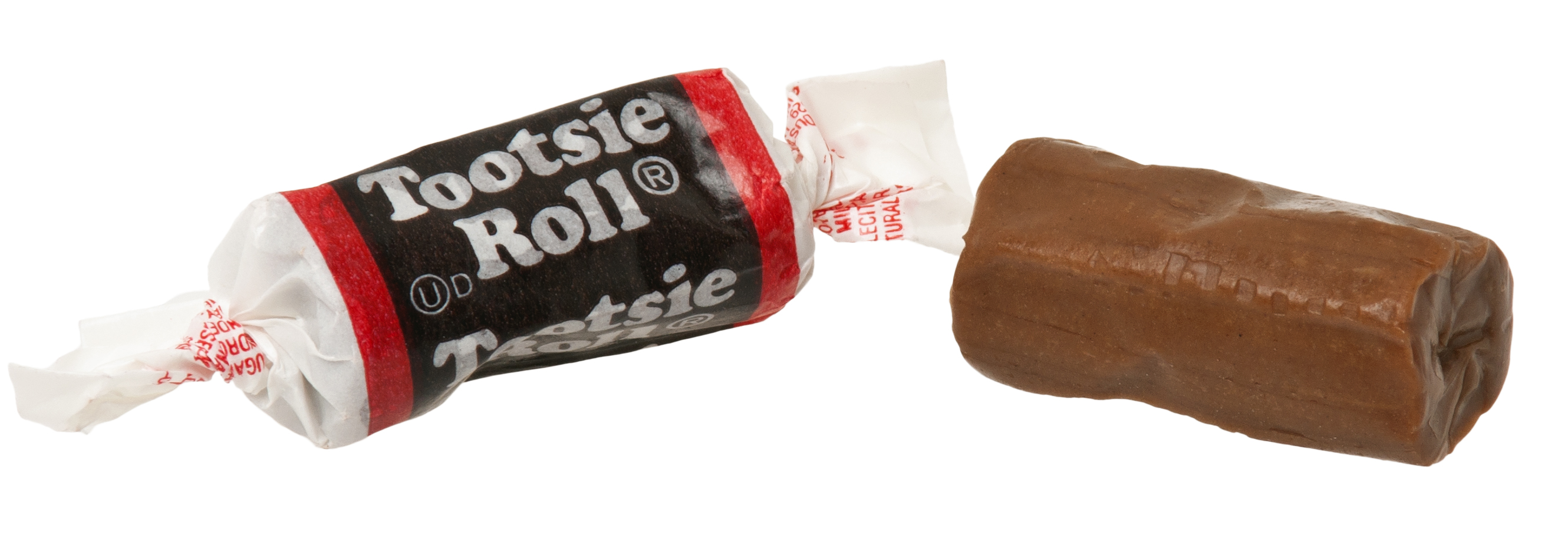The long-standing myth that Tootsie Roll Industries offered prizes for wrappers depicting a Native American boy shooting a star has been a part of popular culture for decades. However, this claim is unfounded. Tootsie Roll Industries themselves have clarified that they never sponsored any promotion or contest involving their wrappers. This rumor is a fascinating example of how urban legends can take root and persist over time, despite lacking any official backing from the company.
The Origin and Perpetuation of the Rumor
Interestingly, about one-third of Tootsie Pop wrappers feature the image in question. It’s this prevalence that may have contributed to the durability of the myth. While Tootsie Roll Industries never endorsed this promotion, some individual stores have occasionally recognized the rumor and provided children with a free Tootsie Pop for a star-imprinted wrapper. This store-level participation likely played a significant role in keeping the myth alive and may have even been its starting point.
Delving into Tootsie Pop trivia, various studies, including those by researchers at Cambridge and Purdue, have attempted to answer the age-old question: How many licks does it take to get to the center of a Tootsie Pop? While results vary, it’s estimated that around 250 licks are needed for an adult licking from one side. Tootsie Pops, introduced in 1931, were the first lollipops with a candy center. The original flavors were Chocolate, Cherry, Orange, Grape, and Raspberry, with the lineup expanding over the years.

The Tootsie Roll, named after creator Leo Hirshfield’s daughter “Tootsie” (real name Clara), was designed as a chocolate that wouldn’t melt easily, using ingredients that weren’t rationed during wartime. This made it a popular item during the Great Depression and World War II. The Tootsie Pop, created in 1930, furthered the company’s innovation. Today, Tootsie Roll Industries produces approximately 64 million Tootsie Rolls and 20 million Tootsie Pops daily.
The Nutritional Concerns of Tootsie Rolls
- Tootsie Rolls, a beloved candy, face criticism for their nutritional content. The use of palm oil, a source of artificial trans fats, raises health concerns. Additionally, their high sugar content, accounting for 52% by weight, poses risks of insulin spikes and health issues related to excessive sugar consumption. This information emphasizes the need for moderation and awareness of the ingredients in our favorite treats.
- One of the primary health concerns with Tootsie Rolls is their high sugar content. With sugar comprising over half of their weight, these candies can contribute to insulin spikes and potential long-term health issues such as diabetes and obesity when consumed in excess.
- Tootsie Rolls contain palm oil, which can contribute small amounts of unhealthy artificial trans fats. These fats are linked to an increased risk of heart disease and should be consumed in moderation.
Dental Health Concerns
- The sticky and chewy nature of Tootsie Rolls can be detrimental to dental health. They can cling to teeth, potentially leading to cavities and tooth decay, especially if dental hygiene is not meticulously maintained.
- Tootsie Rolls contain ingredients like milk and soy, which are common allergens. Individuals with allergies to these ingredients need to be cautious, making Tootsie Rolls unsuitable for them.
Benefits of Tootsie Rolls
In moderation, Tootsie Rolls can be a harmless and enjoyable treat. The key is to consume them in small quantities and not as a regular part of one’s diet. Like many sweets, Tootsie Rolls can provide emotional comfort or a nostalgic experience, which can be beneficial for mental health when enjoyed responsibly.
Tootsie Rolls have become harder to find due to supply chain disruptions. Ingredients and packaging supplies have been delayed, impacting the ability of Tootsie Roll Industries to meet rising demand. This situation highlights the broader challenges faced by the confectionery industry in adapting to logistics and supply chain constraints in recent times.
Tootsie Rolls and Food Safety Concerns
In a disturbing event, Tootsie Rolls were found contaminated with PCP, leading to hospitalizations. This incident underscores the importance of food safety and the need for stringent quality control measures in the food industry. It also highlights the potential risks associated with food tampering and the need for vigilance by consumers and manufacturers alike.
Facts You Didn’t Know About Tootsie Rolls
- Tootsie Rolls were included in American soldiers’ rations during World War II due to their durability and resistance to spoilage. Their ability to withstand various weather conditions made them an ideal treat for troops in different environments.
- The iconic Tootsie Pop, a lollipop with a Tootsie Roll center, was reportedly created by accident. The idea was born when a piece of Tootsie Roll became stuck on a lollipop stick, leading to the innovative creation.
- The exact formula of Tootsie Rolls is a closely guarded secret, known to very few people. This secrecy is similar to that of other famous recipes like Coca-Cola, adding an element of mystique to the candy.
- Tootsie Rolls were named after the daughter of the creator, Leo Hirshfield. His daughter’s nickname was “Tootsie,” which he used as an affectionate and personal touch for his creation.
- During the Korean War, a miscommunication led to a unique event known as the “Tootsie Roll Miracle.” When U.S. Marines, trapped in the Chosin Reservoir, requested mortar ammunition (code-named “Tootsie Rolls”), they received actual Tootsie Rolls instead. These candies provided crucial sustenance and even helped in patching up equipment in the freezing conditions.
- The non-melting quality of Tootsie Rolls was a significant factor in their popularity. This characteristic was particularly important during the Great Depression and wartime when heat-resistant chocolate alternatives were in demand.
- Tootsie Roll Industries owns several other popular candy brands, including Charms, Dots, Junior Mints, and Sugar Daddy. This diversity shows the company’s expansion beyond just the Tootsie Roll candy.
- The process to make a Tootsie Roll is surprisingly long, taking approximately 72 hours from start to finish. This lengthy process ensures the unique texture and flavor of the candy.
- In recent years, Tootsie Roll Industries has made efforts to become more environmentally friendly. They have implemented measures to reduce waste and energy consumption in their production processes.
- Tootsie Rolls have been used in dental research to simulate the chewing experience. Their consistency and texture make them ideal for testing dental materials and equipment.
Hot Debates About Tootsie Rolls
The Ethics of Marketing to Children with Candy Wrappers
Proponents of using fun and engaging imagery on candy wrappers argue that it’s a harmless marketing tactic that adds to the enjoyment of the product. They suggest that such branding creates memorable experiences and fosters a sense of nostalgia. This marketing approach is seen as a staple of the confectionery industry, with a long history of appealing to children through colorful and playful packaging.
Critics, however, argue that marketing sugary products to children contributes to unhealthy eating habits. They stress that children are impressionable and more likely to demand products with appealing imagery, irrespective of their nutritional value. This tactic, they claim, indirectly contributes to health issues like obesity and diabetes in children, raising ethical concerns about targeting a vulnerable demographic.
Cultural Representation in Branding
Some defend the use of cultural imagery in branding, like the Native American boy on Tootsie Pop wrappers, as a form of cultural representation and appreciation. They argue that these images can be educational and promote diversity, provided they are depicted respectfully and accurately.
Opponents counter that using cultural stereotypes in branding, especially for profit, is insensitive and exploitative. They contend that such representations often perpetuate clichés and can trivialize or misrepresent the cultures they intend to portray. Critics call for more inclusive and respectful approaches in corporate branding that honor cultural diversity without reducing it to a marketing tool.
Urban Myths and Brand Lore
Supporters of brand lore and urban myths argue that they add an element of intrigue and mystery to a brand, enhancing consumer engagement. They believe these stories, even if unendorsed by the company, contribute positively to brand identity and loyalty, creating a unique consumer-brand relationship.
Detractors, however, see these myths as potentially misleading, creating false expectations and beliefs among consumers. They argue that companies have a responsibility to clarify misconceptions, particularly when these myths lead to misinformation or unrealistic expectations about the product.
Consumer Trust and Corporate Transparency
Advocates for maintaining brand myths and legends assert that these stories are part of a brand’s charm and heritage. They argue that as long as these myths are harmless, there’s no need for companies to actively dispel them, as doing so might take away from the brand’s mystique and consumer appeal.
On the other hand, critics emphasize the importance of honesty and transparency in all corporate communications. They argue that allowing myths to circulate, even innocuous ones can erode consumer trust over time. Companies, in their view, should always strive for clarity and truthfulness in their messaging.
Impact of Food Myths on Consumer Behavior
Proponents of letting food myths persist argue that they often have little to no impact on overall consumer behavior. They see these myths as part of a broader cultural narrative around certain foods, contributing to the fun and enjoyment of the product without significantly influencing consumer decisions.
Critics, however, believe that even seemingly harmless myths can affect consumer behavior, especially among children. They argue that such myths can encourage increased consumption or preference for certain products based on folklore rather than nutritional value or personal preference, leading to an unhealthy relationship with food.
Tootsie Roll Industries actively engages with their consumers, notably through the “Clean Stick Award,” given to those who write in about their Tootsie Pop licking experience. Additionally, they developed “The Legend of the Indian Wrapper” as a creative response to the overwhelming inquiries about the rumored prize. This legend speaks to the brand’s commitment to storytelling and customer engagement, cementing its place in popular culture.

